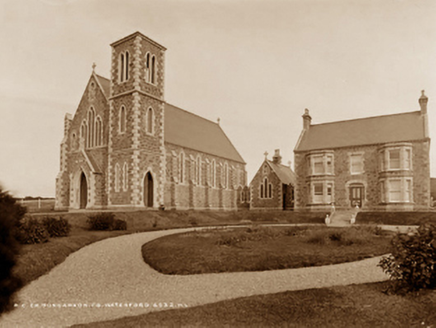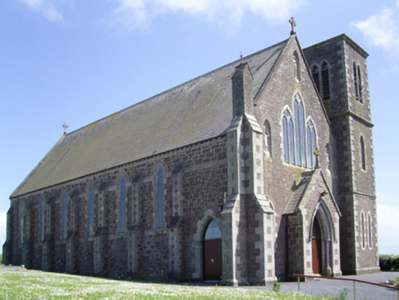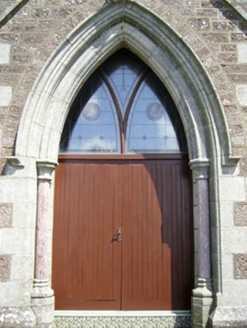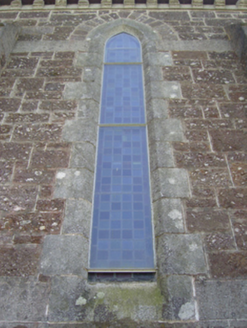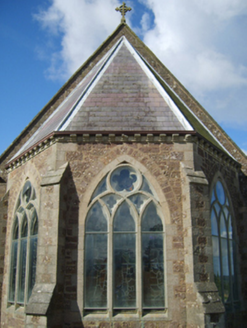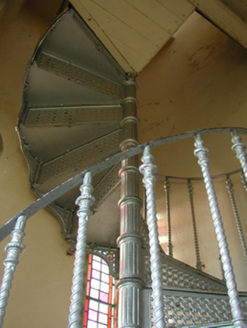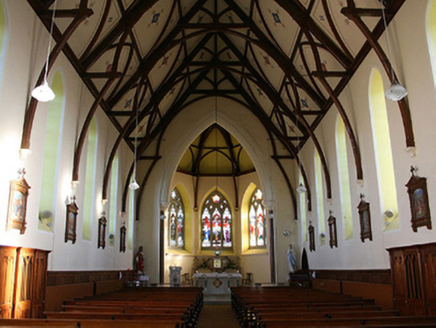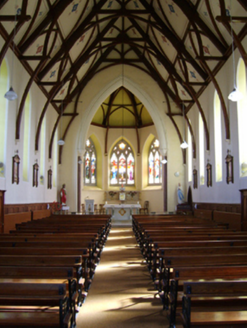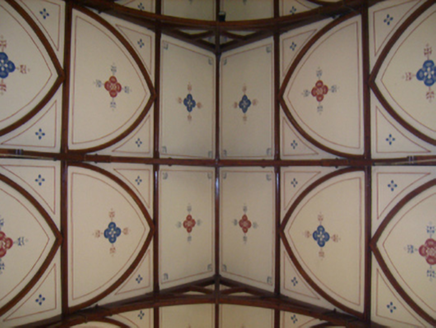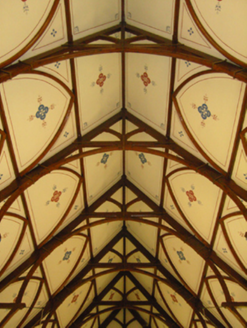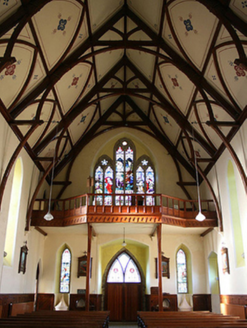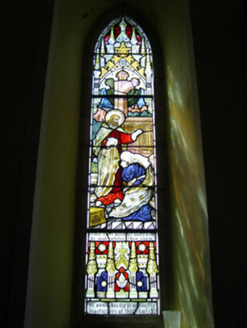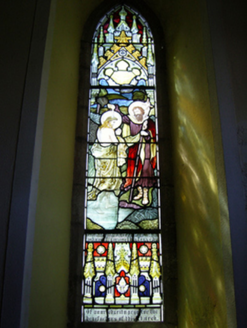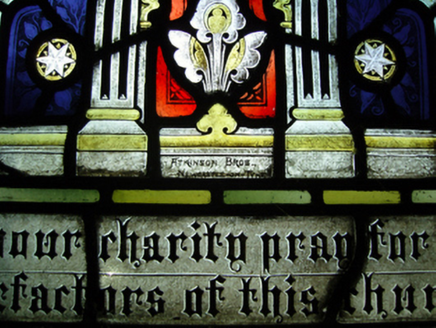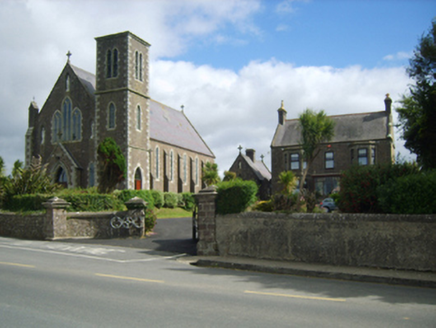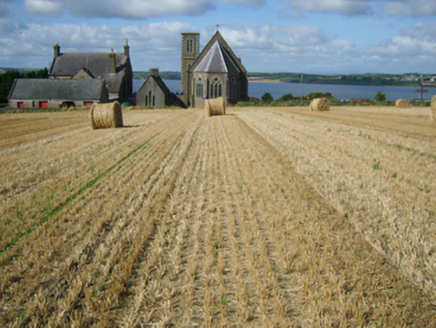Survey Data
Reg No
15618023
Rating
Regional
Categories of Special Interest
Architectural, Artistic, Historical, Scientific, Social, Technical
Original Use
Church/chapel
In Use As
Church/chapel
Date
1890 - 1900
Coordinates
273063, 108469
Date Recorded
03/09/2007
Date Updated
--/--/--
Description
Detached eight-bay double-height Catholic church, begun 1891; stalled 1892; completed 1896; dated 1896, on a rectangular plan comprising seven-bay double-height nave opening into single-bay double-height apse (east) on a half-octagonal plan with single-bay single-storey gabled advanced porch to entrance (west) front; single-bay three-stage tower (south-west) on a square plan. Renovated, 1966, with sanctuary reordered. Pitched slate roof; half-octagonal slate roof (east), roll moulded clay ridge tiles, lichen-spotted coping to gables with Cross finials to apexes, and cast-iron rainwater goods on cut-granite beaded consoles retaining cast-iron downpipes. Cut-granite banded tuck pointed snecked "Old Red Sandstone" walls on cut-granite chamfered cushion course on plinth with stepped buttresses including clasping stepped buttresses to corners to entrance (west) front having cut-granite "slated" coping. Lancet window openings with cut-granite block-and-start surrounds having chamfered reveals framing storm glazing over fixed-pane fittings having stained glass margins centred on square glazing bars. Pointed-arch window openings to apse (east) with cut-granite interlocking mullions, and cut-granite block-and-start surrounds having chamfered reveals framing storm glazing over fixed-pane fittings having leaded stained glass panels. Pointed-arch door opening to entrance (west) front below cut-limestone date stone ("1896") with mosaic tiled cut-granite step threshold, and cut-granite block-and-start surround having engaged colonette-detailed reveals with hood moulding over framing timber boarded double doors having overlight. Lancet flanking window openings with cut-granite block-and-start surrounds having chamfered reveals framing storm glazing over fixed-pane fittings having leaded stained glass panels. Pointed-arch "Trinity Window" to gable with cut-granite Y-mullions, and cut-granite block-and-start surround having chamfered reveals framing storm glazing over fixed-pane fittings having leaded stained glass panels. Full-height interior open into roof with timber panelled choir gallery on an engaged half-octagonal plan below stained glass memorial "Trinity Window" (----), carpeted central aisle between timber pews in embossed cast-iron frames, diagonal timber boarded wainscoting supporting carved timber dado rail, Classical-style timber stations between frosted glass windows, exposed trefoil arch braced Hammerbeam timber roof construction on cut-granite "Cavetto" corbels with pointed-arch wind braced stencilled ceiling in carved timber frame on carved timber cornice, and pointed-arch chancel arch framing cut-veined white marble stepped dais to sanctuary (east) reordered, 1966, with quatrefoil-detailed cut-veined white marble panelled altar below stained glass memorial windows (----). Set in landscaped grounds on a slightly elevated site with chamfered piers to perimeter having Star of the Sea-detailed gabled capping supporting crocketed wrought iron double gates.
Appraisal
A church erected under the aegis of Reverend Thomas Doyle PP (1817-1903) representing an important component of the late nineteenth-century built heritage of south County Wexford with the architectural value of the composition confirmed by such attributes as the rectilinear plan form, aligned along a liturgically-correct axis; the construction in a ruby-coloured "Old Red Sandstone" offset by silver-grey granite dressings not only demonstrating good quality workmanship, but also producing a lively two-tone palette; the slender profile of the openings underpinning a "medieval" Gothic theme with the polygonal apse defined by cusped "East Windows"; and the spire-less tower embellishing the roofline as a prominent eye-catcher in the landscape. Having been well maintained, the elementary form and massing survive intact together with substantial quantities of the original fabric, both to the exterior and to the interior reordered (1966) in accordance with the liturgical reforms sanctioned by the Second Ecumenical Council of the Vatican (1962-5) where contemporary joinery; stained glass signed by Atkinson Brothers (established 1876) of Newcastle-upon-Tyne; and Pugin-esque stencil work, all highlight the artistic potential of the composition: meanwhile, a sinuous Hammerbeam roof construction pinpoints the engineering or technical dexterity of a church forming part of a neat self-contained group alongside an adjacent presbytery (see 15618024) with the resulting ecclesiastical ensemble making a pleasing visual statement in a seaside village street scene.
